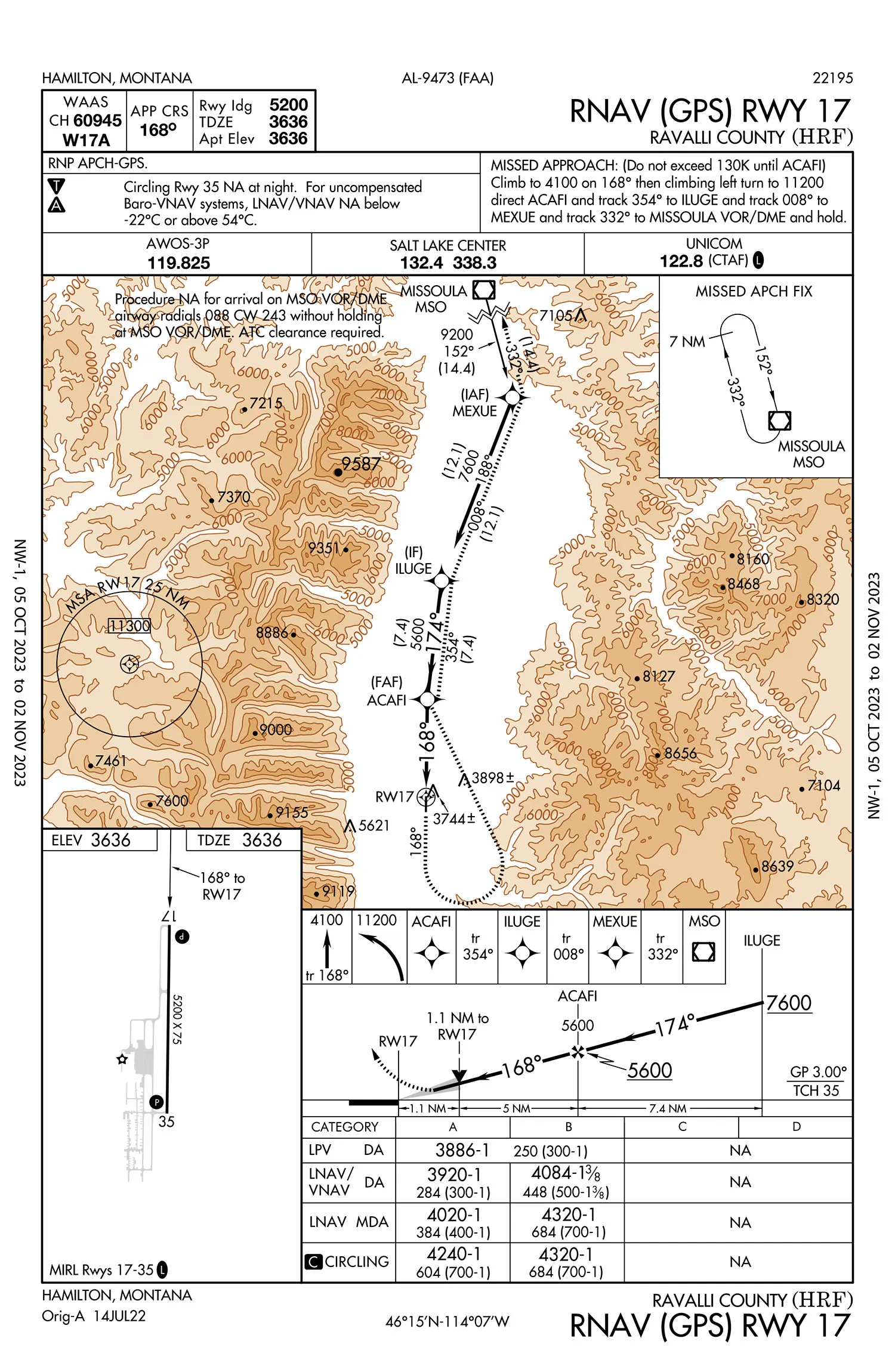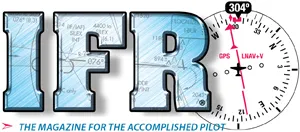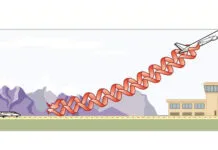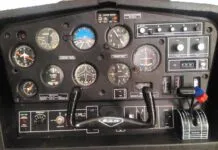Special VFR
Great September 2023 article on Special VFR (SVFR) by Elim Hawkins. I can see how this might become a well-worn tool for VFR-only pilots and a rusty unused one for IFR pilots. As an instrument pilot in an instrument plane who’s already operating on an IFR flight plan, I would never choose the SFVR option on approach. But I can see where it would come in handy when waiting to depart on a beautiful morning impeded by both traffic delays and a localized fog layer over the airport.
On approach to an airport, I wouldn’t choose this option without first considering the contact approach. These first two instances are often referred to as “legalized scud running” due to all the hazards that the pilot is freely accepting. In either case, the one mile and clear of clouds is not a get-out-of jail-free, carte-blanche invitation to violate legally defined Minimum Safe Altitudes. You need to have “ground contact” at 1000 feet or better until in a position to make a normal descent to a landing.
A year and a half ago I sent Frank an email about a friend I took out to lunch and confronted for performing a low drag of nearly 1.4 NM to the airport at a few hundred feet AGL and close to the ceiling. His maneuvering began over the hangars about 650 feet right of the runway and about 740 feet past the threshold of what is now a 3842-foot runway. He was only 30-40 feet above the hangars when maneuvering for the runway.
He’s a good guy with a great resume but he was defensive and insisted that he was covered by the legal exception for landing (§91.119 Minimum Safe Altitudes). Well where does landing begin? I suggested that most would agree that it’s where you begin your pattern flow abeam the touchdown zone, or on approach wherever you begin to see and follow the VASI down—often about 1.5 NM out.
Our visibility requirement for the approach is 1¼ SM (about 1.1 NM). When the ADS-B revealed that he’s that far away, he dropped to less than 300 (because apparently that’s how close he needed to be to acquire and maintain ground contact) and the fact that he’s used up nearly 20 percent of the airport before correcting to the runway is further evidence that he didn’t have the required visibility.
When I pointed out that he should have remained at the MDA of 920 feet, he explained that he wasn’t only doing the approach but that he was performing a contact approach. Well a contact approach doesn’t permit you to descend below minimum safe altitude, which for our congested area is 1000 feet. Correct me if I’m wrong about that.
Additionally, further study revealed to me that a contact approach requires ground visibility of 1 statute mile. When you look up the FAA definition of ground visibility it’s the visibility at an aerodrome as reported by an accredited observer.
Truthfully, our little airport (S50) has a five-click “say weather” system, which doesn’t really count for IFR. You have to use the SEA altimeter information eight NM away. It baffles me that a controller would clear a contact approach to an airport without visibility reporting.
—Dan Anderson, Des Moines, Washington
Note that the requirements for a visual approach are 1.) airport or previous aircraft visually in sight, 2.) ceiling at or above 1000 feet AGL, 3.) visibility at least three statute miles, and 4.) ATC clearance for a visual approach.
As for your friend, we essentially agree with you. There are multiple considerations. Yes, §91.119 as appropriate, but also §91.175 Takeoff and Landing Under IFR, if he was IFR, but if not, VFR weather mins.
While he might argue 91.119 lets him do what he did, how’d he get there? He was either VFR and subject to those restrictions, or IFR and subject to 91.175. Saying he was flying a published approach and a contact approach doesn’t quite pass the sniff test. And the published approach didn’t get him to the runway, so he claimed he was then on the contact approach. But, where was the contact and the ATC clearance?
Per, the Pilot/Controller Glossary, with some emphasis added: CONTACT APPROACH—An approach wherein an aircraft on an IFR flight plan, having an air traffic control authorization, operating clear of clouds with at least 1 mile flight visibility and a reasonable expectation of continuing to the destination airport in those conditions, may deviate from the instrument approach procedure and proceed to the destination airport by visual reference to the surface. This approach will only be authorized when requested by the pilot and the reported ground visibility at the destination airport is at least 1 statute mile.
The AIM expands on that (5-4-25) but doesn’t really add anything. It’s interesting that both sources state the requirement for “1 mile flight visibility” without stating whether that’s NM or SM, while then specifying ground visibility of at least 1 SM.
Contact approaches are so rare that most of us have never flown one, and most controllers have forgotten them.
Will That Work?
I have been operating a BE400A out of KHRF (Ravalli County in Hamilton, Montana) recently, and fortunately for me, the winds have always supported a Runway 35 departure. This allows me to depart IFR using the HAMEY2 Departure Procedure. I noticed, however, that if the winds favored a Runway 17 departure, there is no ODP published. In fact, the ODP says “Runway 17: NA Obstacles.”
Due to the short runway (5200’) and high airport altitude, it is usually not possible for me to depart with a tailwind. So, if the winds were favoring Runway 17, is there any legal way to depart IFR? What if the weather was clear, with no restrictions to visibility or ceiling? Is it legal to depart VFR on Runway 17?
—Justin Bright, San Diego, California
 First, if you’re bound by takeoff minimums, the takeoff minimums note for Runway 17, “NA-Obstacles,” is controlling—no IFR departures from Runway 17. But, assuming you’re not bound by that, you have a few limited options:
First, if you’re bound by takeoff minimums, the takeoff minimums note for Runway 17, “NA-Obstacles,” is controlling—no IFR departures from Runway 17. But, assuming you’re not bound by that, you have a few limited options:
First, yes, you can depart VFR. If doing so, we’d suggest getting established on, and compliant with, the HAMEY TWO as soon as possible.
Or, you can depart IFR, but on getting your clearance specify that you can maintain your own terrain and obstacle clearance until some point, perhaps MEXUE at some altitude, perhaps 12,000 or more (assuming you have ceiling and visibility sufficient for that).
Finally, you can roll your own departure procedure from Runway 17. That’s risky and if there are any problems, you’re on your own, both legally and for safety. But, it’s not illegal.
Looking at the charts, perhaps your least risky choice in rolling your own is to follow the missed approach path and altitudes for the RNAV (GPS) Runway 17 approach. Actually, once you get turned around and high enough, that nearly follows the HAMEY TWO.
In evaluating that path, pay close attention not only to the minimum crossing altitudes but the climb gradient. While you only need climb from the runway to 4100 feet before you begin your left turn back to cross ACAFI at or above 5600, you’re still expected to maintain a climb of at least 200 feet/NM. Also note that the depicted missed-approach procedure shows passing over terrain at 5000 feet. So, manage your speed carefully to achieve sufficient climb until above 5000 feet, and keep your turn as tight as practical to stay away from those rocks to the east.
It’s not often we get bogged down in CYA niceties, but this is a good time to be clear. We understand a lot about TERPS, but we’re not authorized to create procedures. Clearly, the official TERPSters were unable to create a compliant departure procedure for Runway 17, and that should give you serious pause. For us, this was a theoretical exercise and we offer theoretical observations. You alone, as PIC, must be absolutely certain that anything you attempt is going to be safe. In addition, should you find a way to depart Runway 17 when IFR, you should practice it under the hood with a safety pilot in VMC to judge the safety.
Finally, if that doesn’t scare you enough, think about losing an engine in that left turn and below 5000 feet. Never mind the hood and safety pilot—you might want to try that one in the sim.
We read ’em all and try to answer most e-mail, but it can take a month or more. Please be sure to include your full name and location. Contact us at Frank@IFR-Magazine.com.





